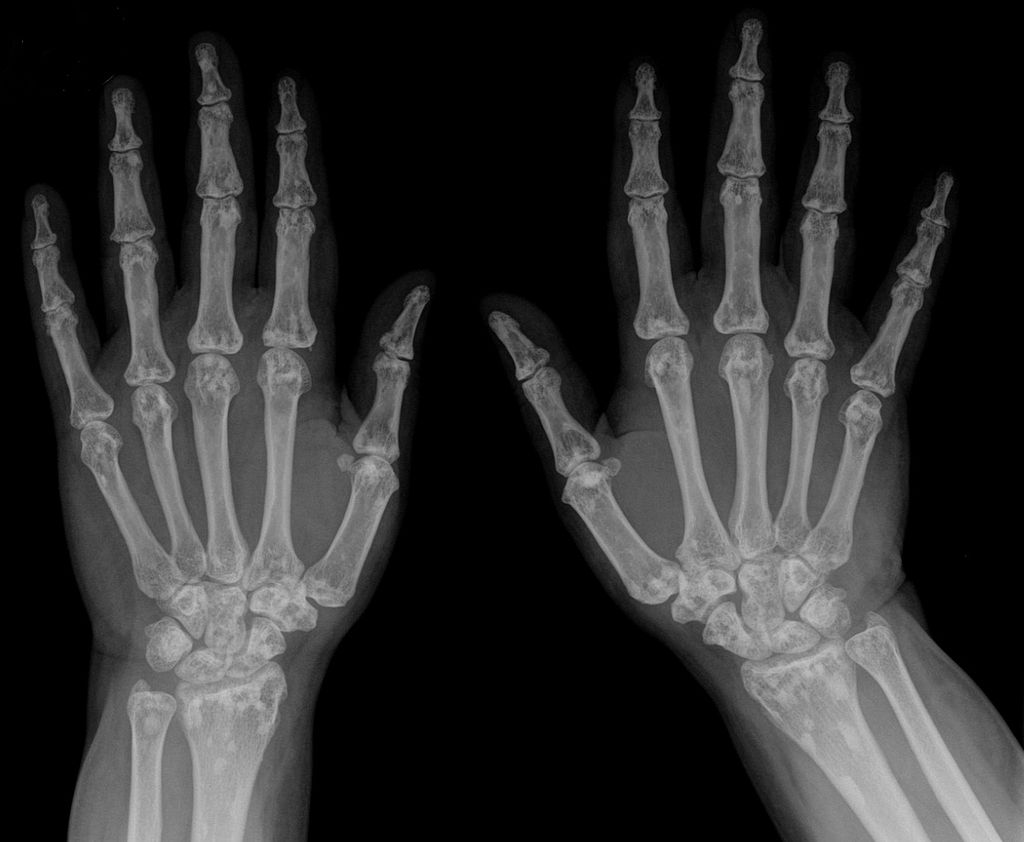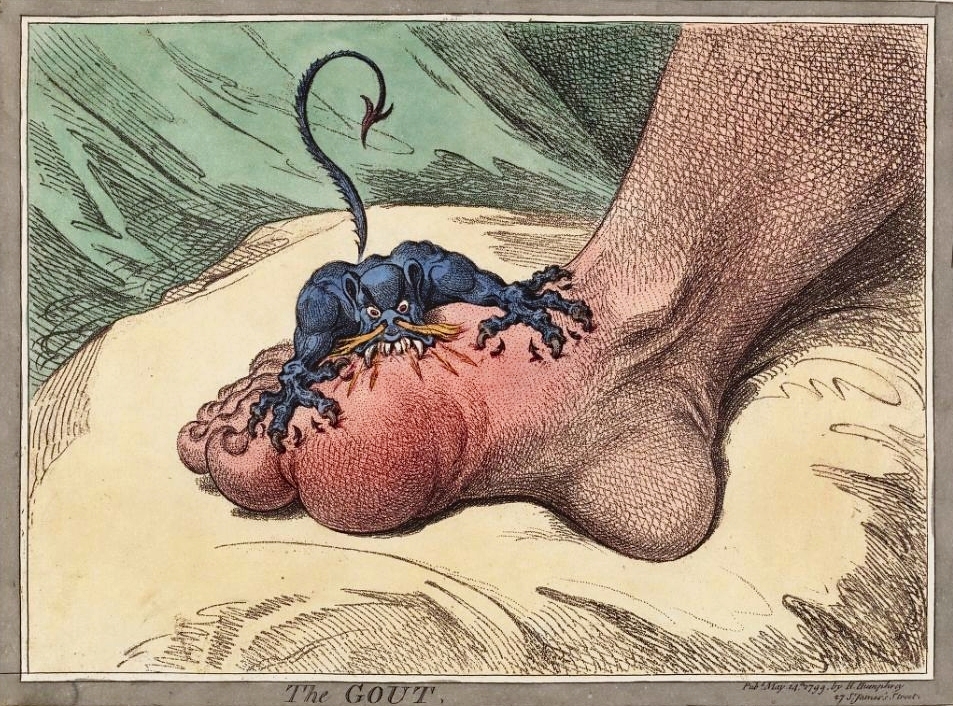All About Arthritis
Arthritis is a condition that affects more than 40 million Americans, both young and old.
So, don’t ignore those aches, pains, or stiffness in your joints. Yes, there are temporary causes–and solutions–for these issues, but it can also be a sign of arthritis.

Image by Hellerhoff (Own work) CC BY-SA 3.0 or GFDL, via Wikimedia Commons
We are joined by ADO Medical Director Dr. Howard Zahalsky.
Anatomy of Arthritis
![Image by OpenStax College [CC BY 3.0 ]Wikimedia Commons](http://www.activdoctorsonline.com/wp-content/uploads/2015/09/907_Synovial_Joints-small.png)
Image by OpenStax College [CC BY 3.0], via Wikimedia Commons
A joint is anywhere that two bones meet. Some are obvious, like the elbow and the knee, while others are not. Your spine, for example, is composed of vertebrae that are “piled” and meet over the course of your spine. Some back pain can be caused by arthritis of your spine. Others hardly move at all, like your rib and your sternum, every time you take a breath your ribs and sternum move against each other you can get arthritis.
Bones have articular cartilage at joints, which is essentially a padding that keeps bones from rubbing directly together, just like the tire protects the rims on your car. Between the cartilages, synovial fluid lubricates the cartilage so that they do not become irritated.
Imagine the articular cartilage in your joints is like an eraser on an end of a pencil,” explains Dr. Zahalsky, “Just like an eraser, the cartilage can become worn down over time.” This can be caused by age, use and genetics.
The most common form of arthritis is osteoarthritis, sometimes referred to as wear-and-tear arthritis or degenerative joint disease. It affects more than 27 million people in the United States. “Despite my initial definition, in many cases there is no inflammation,” explains Dr. Zahalsky, “So although we call this osteoarthritis, this is technically osteo-arthralgia, and people with osteoarthritis will have just normal wear and tear, but there is no inflammation.”
Types of Arthritis
There are more than 100 forms of this crippling disease, which can cause stiffness, swelling and severe joint pain and lead to a loss of motion and mobility.
Arthritis, by definition, is inflammatory. Under these this conditions, your body detects either a problem or invasion in the joint and attacks the joint as it would an infection. Your body sends inflammatory cells to fight the perceived infection. The joint will get red, warm and swollen, wearing down the cartilage and subsequently the bone. Different types of arthritis attack different areas. The fluid that builds up in the joints contains a lot of the fluid left in the joint after an infection. In fact, most treatment options include draining the fluid to remove these aggressive cells.
Rheumatoid Arthritis
In rheumatoid arthritis, for reasons that we do not fully understand, your body mistakes the proteins in your joints for proteins in bacteria. In an attempt to kill the “bacteria,” the inflammatory cells kill the joint cells as well and over time can do severe damage to the joint.
Psoriatic Arthritis
Psoriatic arthritis is a form of arthritis coupled with psoriasis – a condition that features red patches of skin topped with silvery scales. Most people develop psoriasis first and are later diagnosed with psoriatic arthritis, but the joint problems can sometimes begin before skin lesions appear.
Lupus
In lupus, something goes wrong with your immune system, causing it to attack just about any part of the body (skin, joints, and/or organs inside the body).
Reiter syndrome
Reiter syndrome is a type of reactive arthritis that happens as a reaction to a bacterial infection in the body, usually in the intestines, genitals, or urinary tract. Reiter syndrome includes redness, joint swelling and pain, often in knees, ankles, and feet, along with inflammation of the eyes and urinary tract.
Gout
Usually affects the base of the big toe. Most of the inflammatory arthritis situation, your body attacks itself. When you have gout, your body produces too much uric acid (a side effect of muscles breaking down improperly) and the buildup “falls” to the lowest point in your bod – your toe. The uric acid crystals are attacked by the body, which really does more harm.

In 1799, artist James GIllray depicts gout as a small fierce creature with sharp teeth is biting into a swollen foot at the base of the big toe
How do we treat arthritis?
Unfortunately, there is no cure for arthritis. There are various treatment options that can help with managing pain and reducing the risk of permanent joint deformity and disability. Each type of arthritis requires its own treatment.
Joint Replacement
The only way to fix it is to replace the lost cartilage. They are replaced with either metal or ceramic replacements. These have a much shorter lifespan than the one you grow yourself. The average lifespan of a man made joint replacement is about 10-15 years (vs the 50-60 year the original lasted). Orthopedics sill put off replacing a joint for as long as possible because while the first replacement is relatively simple, a second join replacement can be very complicated
Pain management
Treated with nsaid (non-steroidal anti-inflammatory drug). They don’t do anything for inflammation, because osteoarthritis doesn’t involve inflammation, they work with your brain to block pain associated with inflammation. So it doesn’t make inflammation any “better”, just less painful.
Treating Inflammation
DMARD (disease modifying anti-rheumatic drugs) are medications that prevent inflammation and can stop immune inflammatory response in your body to stop your body from destroying its own joints. They are immune suppressants – they make you more susceptible to other infections, like pneumonia or the common cold, and can cause chronic immune issues.
Arthritis Facts

- More than 50 million adults have doctor-diagnosed arthritis.
- Arthritis is the nation’s #1 cause of disability.
- Arthritis and related conditions account for $156 billion annually in lost wages and medical expenses.
- 2/3’s of people with arthritis are under age 65, including an estimated 300,000 children.
How Can ADO Work for you?
Personal Health Record
With your personal health record, you can track all your medicines, especially if you are put on a serious immune suppressant
Second Medical Opinion
With our SMO, you can speak with one of your thousands of experts throughout the medical field, for example a rheumatologist, to suggest if you should be doing something differently with your doctor
E-Consultation
E-consultations you can quickly speak with your doctor about acute flair ups.